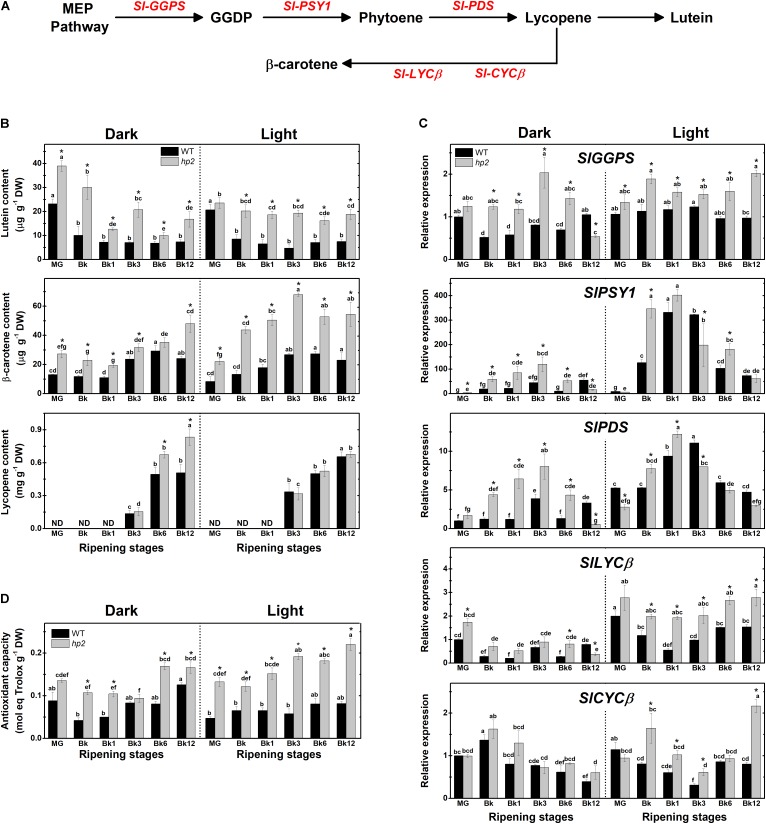FIGURE 1.
Loss of Sl-DET1/HP2 function promotes tomato fruit carotenoid biosynthesis and antioxidant capacity in both dark- and light-ripened fruits. Wild-type (WT) and high pigment-2 (hp2) fruits harvested at mature green (MG) stage were left to ripen under constant light (L) or dark (D) conditions. Pericarp samples were harvested at MG (2 days after the beginning of treatment), breaker (Bk), Bk1 (1 day after Bk), Bk3, Bk6, and Bk12 stages. (A) Schematic representation of carotenoid biosynthetic pathway in tomato. Intermediate reactions are omitted. (B) Lutein, β-carotene and lycopene content in pericarp tissues. (C) Relative mRNA levels of carotenoid biosynthesis genes. Mean relative expression was normalized against wild-type (WT) samples at mature green (MG) stage under dark conditions. (D) Trolox equivalent antioxidant capacity (TEAC) content in lipophilic extracts. Data are means (±SE) of at least three biological replicates. Different letters indicate statistically significant differences (Tukey’s test, p < 0.05) within each genotype. Asterisks indicate statistically significant differences (Student’s t-test, p < 0.05) between genotypes. MEP, Methylerythritol 4-phosphate; GGDP, Geranylgeranyl diphosphate; GGPS, GGDP synthase; PSY, Phytoene synthase; PDS, Phytoene desaturase; LCYβ, Chloroplast-specific β-lycopene cyclase; CYCβ, Chromoplast-specific β-lycopene cyclase.

